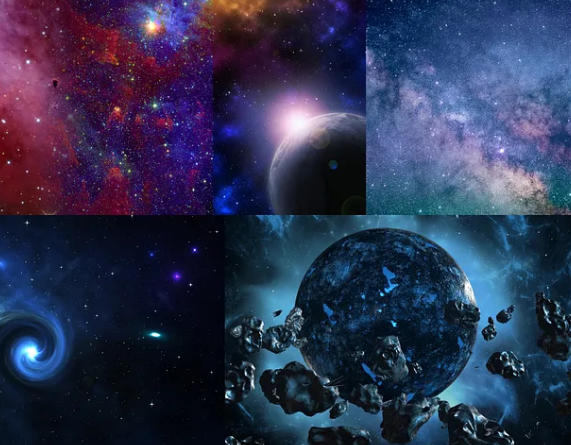As humanity reaches for the stars, the challenge of surviving and thriving in the harsh environment of space has driven innovation across every field of science and engineering. At the heart of many of these breakthroughs lies a material that has proven its worth time and time again—titanium. With its exceptional strength-to-weight ratio, corrosion resistance, and ability to withstand extreme temperatures and radiation, titanium is not just a material of choice—it is a mission enabler.
From spacecraft construction to extraterrestrial habitats, titanium is playing a vital role in space missions today and promises to be foundational in the colonization of the Moon, Mars, and beyond. This article explores the potential of titanium in space exploration, its critical applications, and its transformative impact on long-term human presence in space.
Why Titanium Is Perfect for Space Applications
Space is one of the most extreme and unforgiving environments known to science. Materials used in space must endure vacuum conditions, cosmic radiation, thermal fluctuations, and mechanical stress during launch and reentry. Titanium is uniquely suited to these demands thanks to a combination of physical and chemical properties:
Key Advantages of Titanium in Space:
- High Strength-to-Weight Ratio: Offers superior structural integrity without the burden of excess mass—critical for launch efficiency.
- Corrosion Resistance: Withstands oxidation and degradation in space, lunar, and Martian environments.
- Thermal Stability: Maintains performance across a wide temperature range, from extreme cold to intense heat.
- Radiation Tolerance: Provides partial shielding and remains stable under cosmic radiation exposure.
- Non-Magnetic and Non-Toxic: Safe for use near sensitive instruments and in life-supporting environments.
These qualities make titanium an indispensable material for building the infrastructure needed for both short-term missions and permanent off-Earth settlements.
Titanium in Current Space Missions
Titanium has been a mainstay in modern spacecraft for decades. From the Apollo missions to the International Space Station (ISS), titanium alloys have proven reliable in various high-stress applications.
1. Launch Vehicles and Spacecraft Structures
Titanium is used extensively in rockets, satellites, and crew modules due to its strength and light weight. Components such as:
- Load-bearing structures
- Fuel tanks
- Engine casings
- Heat shields
…are often made from Ti-6Al-4V, a titanium alloy prized for its durability and resistance to fatigue.
2. Propulsion Systems
Titanium is used in rocket engines for:
- Nozzles and combustion chambers
- Piping systems for cryogenic fuel
- Mounting brackets
Its ability to handle extreme temperatures and pressures makes it critical for maintaining propulsion efficiency and structural safety during launch.
3. Space Station Components
On the ISS and other orbital platforms, titanium is used in:
- Pressure vessels
- Robotic arms
- Antennas and sensor housings Its corrosion resistance and compatibility with sterilization methods make it ideal for long-duration use in orbit.
Titanium’s Role in Moon and Mars Colonization
As space agencies and private companies shift focus toward building permanent outposts on the Moon and Mars, titanium will be crucial in constructing habitats, transport systems, and life-supporting technologies that must operate autonomously for years.
1. Lunar Bases
On the Moon, titanium can be used to build:
- Radiation-shielded shelters
- Structural frames for modular living quarters
- Water storage tanks
- Solar panel mounts and infrastructure
Due to its ability to endure extreme lunar conditions—including long nights, micrometeorite impacts, and temperature swings—titanium enables the construction of reliable, long-lasting infrastructure.
2. Mars Colonization
Mars presents even greater challenges with its thin atmosphere, dust storms, and lower gravity. Titanium’s low density and high strength make it ideal for:
- Pressurized habitat domes
- Greenhouse frames
- Utility systems (piping, wiring casings, water recycling)
- Rover chassis and components
The corrosion resistance of titanium is also key to surviving the oxidizing, dust-filled Martian environment, which can degrade lesser materials.
In-Situ Resource Utilization (ISRU) and Titanium Extraction on Other Worlds
One of the most exciting possibilities for long-term space colonization is extracting and using local resources, also known as in-situ resource utilization (ISRU). Titanium is found in both lunar and Martian soil, especially in the form of ilmenite (FeTiO₃).
1. Titanium on the Moon
Lunar regolith contains ilmenite-rich materials, which can be mined and processed into metallic titanium. This offers the potential to:
- Manufacture structural components directly on the Moon
- Reduce the need to transport materials from Earth
- Produce oxygen as a byproduct during extraction
2. Titanium on Mars
Mars has basaltic soil that contains titanium compounds, which could be refined using solar-powered electrochemical processes. These technologies could enable local 3D printing of parts and infrastructure fabrication, supporting long-term habitation.
3D Printing and Titanium in Off-Earth Manufacturing
Additive manufacturing (3D printing) is revolutionizing how parts and structures are made in space. Titanium powder-based 3D printing allows for:
- On-demand manufacturing of tools and replacement parts
- Construction of complex components with minimal waste
- Lightweight, optimized designs for transport and assembly
NASA, ESA, and private companies are actively developing space-capable 3D printers that use titanium for building parts in orbit, on the Moon, and eventually on Mars. The ability to print titanium structures on-site will be critical to:
- Reduce reliance on Earth-based supply chains
- Enable self-sufficiency for astronauts and settlers
- Rapidly repair or upgrade systems in the field
Titanium in Life Support and Human Survival Systems
Titanium is also used in critical life-support technologies and human interface systems due to its safety, strength, and compatibility with living tissues.
Examples Include:
- Water filtration systems with titanium membranes and housings
- Medical implants and surgical tools for off-world emergencies
- Portable habitat components, including airlocks and structural beams
- Radiation-shielded clothing and gear reinforced with titanium threads or composites
The ability to trust titanium in both structural and human-facing systems enhances the safety and sustainability of long-duration space missions.
Environmental and Economic Considerations
While titanium is more expensive to process than other metals, its durability and lifespan make it a cost-effective choice for space missions. The initial investment is offset by:
- Reduced replacement frequency
- Lower mass penalties
- Minimal degradation in harsh conditions
With further advancements in recycling, low-energy processing methods, and extraterrestrial mining, titanium could become even more accessible for space applications.
Conclusion: Titanium—A Pillar of Space Exploration and Colonization
Titanium is more than just a high-performance material—it’s a critical enabler of our spacefaring future. Its role in spacecraft construction, deep-space habitats, and sustainable extraterrestrial infrastructure makes it one of the most valuable materials in the quest to become a multi-planetary species.
As space missions become more ambitious, the need for materials that can endure, adapt, and enable innovation will grow exponentially. Titanium is positioned to meet that need—whether in orbit, on the Moon, or amid the red dust of Mars.
In the vast frontier of space, where every gram counts and every component must perform flawlessly, titanium stands as a true champion of engineering, survival, and discovery. The promise it holds is not just for missions, but for the next great chapter in human history—colonization beyond Earth.

Also Read :
